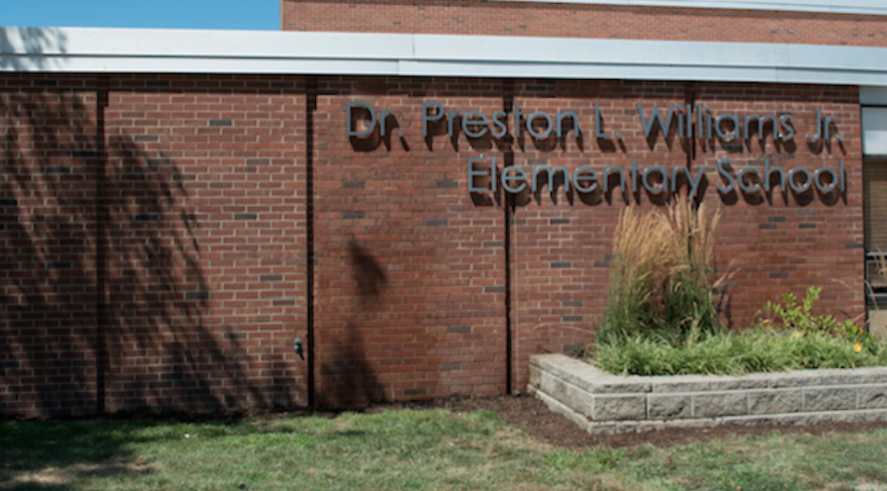In Champaign-Urbana, languages are typically taught at the middle and high school level, and the choices are usually between Spanish, French, or German. However, at schools such as Leal and Dr. Preston L. Williams Jr. in Urbana, students begin to study languages in kindergarten. In Dual Language program, students from kindergarten to 4th grade are immersed in a bilingual setting of both English and Spanish.
In th eprogram, roughly 370 native English-speaking students and native Spanish-speaking students learn partially in English and partially in Spanish. By the time they transition to middle school, these children are accomplished in two languages as well as in multicultural relations, which they will benefit from later in life. Other possible languages, such as French and Mandarin Chinese, are now being considered to expand the Dual Language program. The demand for the Dual Language program signals Urbana School District 116’s relevance in terms of global education.
Currently, the Dual Language aims to address the lack of interaction between native Spanish speakers and native English speakers that typically occurs in ESL settings. Spanish speakers are now able to learn English in a more social environment while English speakers have the benefit of learning a second language early.
The idea was introduced in 2011 and 2012 by Joseph T. Wiemelt, the Director of Equity & Student Learning for USD 116 Bilingual & Multicultural Programs. Wiemelt spoke to stakeholders at meetings, board presentations, and committee work about the program.
“Spanish is the largest linguistic group in Urbana outside of English. Due to the sufficient numbers of students who speak Spanish, and with that number growing drastically, we were able to start the program with Spanish and English,” said Wiemelt.
The Dual Language program began in 2012.
“Leal was chosen as it already had a substantial Latino population, while Dr. Preston L. Williams Jr. was chosen for its large space, upgraded facilities, and prominent African-American population in the hopes of giving those students access,” said Wiemelt.
Currently, the program ends at fourth grade, but it will expand to fifth grade next academic school year. The program follows a 90/10 model in which Spanish is taught prominently. The amount of English instruction increases in kindergarten through second grade, and English and Spanish are spoken in equal amounts in third grade.
“The younger you start with a language, the easier and better you learn it while maintaining your native language,” said Wiemelt. “As opposed to middle and high school foreign language classes that are only taught once a day, our program uses an immersion strategy. Students spend a majority of the day with the target language.”
Dual Language in America is the best model for language; while it is rare, its success is evident. In Urbana, students learning both Spanish and English are performing on par academically. Parents and faculty are pleased with this approach.
“As a parent of a Dual Language student, it’s amazing to see the things my son does in two languages. Also, he’s growing up speaking Spanish fluently, something I wasn’t able to do,” said Wiemelt.
The unique program also brings much popularity in the Champaign-Urbana community.
“Every year we have had the program, we have had a waiting list between 5 to 20 students,” said Wiemelt. “However, the list refreshes every year.”
A possible addition to the program is advancing the current elementary students’ proficiency to middle- and high-school language levels by teaching core classes in Spanish.

“We’re planning to have English and Spanish options for social studies, math, science, and an elective,” said Wiemelt. “However, it will be hard to find certified bilingual teachers and to convince parents that it’s beneficial for their children to maintain their Spanish.”
In future years, the Dual Language program will likely expand to French or Mandarin Chinese. Taking account the number of children who speak either language, either would be a logical choice. However, currently, French is the more likely choice. There is a more permanent community of French speakers in Champaign-Urbana, primarily the Congolese community whose official language is French, whereas Mandarin Chinese speakers are connected with the University of Illinois and plan to move elsewhere at the end of their studies.
“French is a growing linguistic group, while Mandarin Chinese has a steady number of students in Champaign-Urbana,” said Wiemelt. “Adding French would be a way to both support an immigrant community and maintain their native language. Despite a good response from both communities, I’m leaning more toward French as it’s best to support whichever language will be here long-term.”
Applications for the 2016-2017 program are due April 14th and used to demonstrate interest. From there, 10 English speakers are chosen to be matched with 10 Spanish speakers in each classroom.
The Dual Language benefit not only the children, but the Champaign-Urbana community as a whole. Its unique structure recognizes the needed improvements in multicultural interactions and language classes while highlighting the potential of innovative education. Hopefully, it sets an example for other communities.








